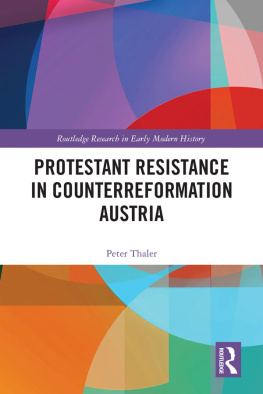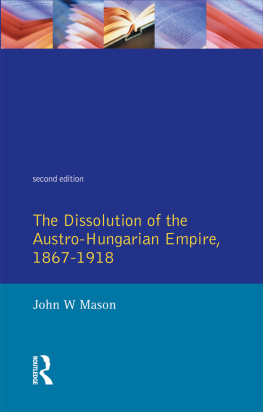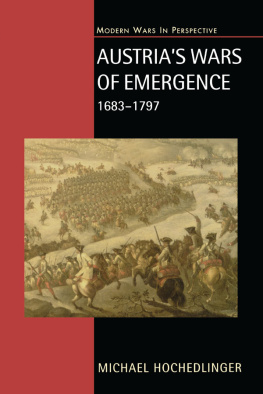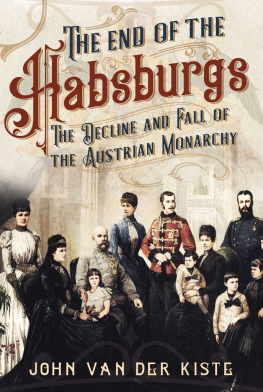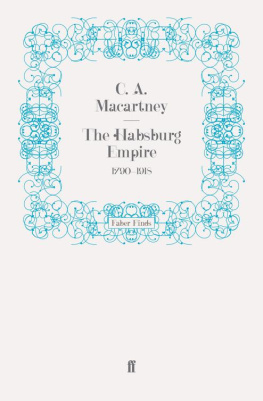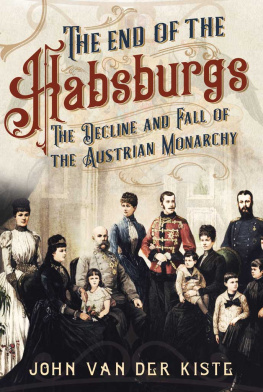PENGUIN BOOKS
THE HABSBURG MONARCHY
A J P Taylor was one of Britain's most popular and authoritative historians. He wrote major scholarly works of British and diplomatic history, which also became bestsellers, and he was much admired for the many impromptu television lectures he gave.
Alan John Percivale Taylor was born in Lancashire in 1906. He was educated at Bootham School in York before winning a scholarship to read History at Oriel College, Oxford, where he received a first-class degree. He then became a lecturer in Modern History at Manchester University from 1930 to 1938, and from then until 1976 was a Fellow of Magdalen College, Oxford. He was later made an Honorary Fellow of Magdalen and received honorary doctorates from, among others, Bristol, Warwick and Manchester universities. His books include The Course of German History; The Last of Old Europe; How Wars Begin; How Wars End; The Trouble Makers; Beaverbrook; Essays in English History; Europe: Grandeur and Decline; and his autobiography, A Personal History. His most important works are still in print, of which Penguin publish Bismarck: The Man and the Statesman; The Origins of the Second World War; The First World War; The Second World War: An Illustrated History; The Habsburg Monarchy 18091918; The War Lords; a collection of essays on nineteenth-century Europe entitled From Napoleon to the Second International; and From the Boer War to the Cold War, a further collection of his essays.
A J P Taylor died in September 1990. In his obituary, The Times paid tribute to him as probably the most controversial, and certainly the best known, historian in the English-speaking world. In his prime A J P Taylor attracted and usually bewitched a wider following than Macaulay ever dreamt of. Prolific and bestselling author, gifted journalist, and sui generis as a television star, he attempted to transform the historical understanding of his day.
THE HABSBURG MONARCHY 18091918
A HISTORY OF THE AUSTRIAN EMPIRE AND AUSTRIA-HUNGARY
A J P TAYLOR

PENGUIN BOOKS
IN ASSOCIATION WITH HAMISH HAMILTON
PENGUIN BOOKS
Published by the Penguin Group
Penguin Books Ltd, 80 Strand, London WC2R 0RL, England
Penguin Putnam Inc., 375 Hudson Street, New York, New York 10014, USA
Penguin Books Australia Ltd, 250 Camberwell Road, Camberwell, Victoria 3124, Australia
Penguin Books Canada Ltd, 10 Alcorn Avenue, Toronto, Ontario, Canada M4V 3B2
Penguin Books India (P) Ltd, 11 Community Centre, Panchsheel Park, New Delhi 110 017, India
Penguin Books (NZ) Ltd, Cnr Rosedale and Airborne Roads, Albany, Auckland, New Zealand
Penguin Books (South Africa) (Pty) Ltd, 24 Sturdee Avenue, Rosebank 2196, South Africa
Penguin Books Ltd, Registered Offices: 80 Strand, London WC2R 0RL, England
www.penguin.com
First published by Hamish Hamilton 1948
Published in Peregrine Books 1964
Reprinted in Pelican Books 1981
Reprinted in Penguin Books 1990
Copyright 1948 by A J P Taylor
All rights reserved
Except in the United States of America, this book is sold subject to the condition that it shall not, by way of trade or otherwise, be lent, re-sold, hired out, or otherwise circulated without the publisher's prior consent in any form of binding or cover other than that in which it is published and without a similar condition including this condition being imposed on the subsequent purchaser
ISBN: 978-0-14-193238-5
TO
L. B. NAMIER
THIS RENEWED TOKEN OF GRATITUDE
AFFECTION AND ESTEEM
CONTENTS
PREFACE
T HIS book is an entirely rewritten version of an earlier work with the same title, which I published in 1941. It is about half as long again as its predecessor. Apart from general additions, it treats Austrian foreign policy with greater detail and relevance. The Habsburg Monarchy, more than most great powers, was an organization for conducting foreign policy; and its fate was determined quite as much by foreign affairs as by the behaviour of its peoples. The creation of the Austrian Empire was dictated by Napoleon; the establishment of Austria-Hungary by Bismarck; and the Monarchy fell at the end of a great war, which it had itself helped to bring about. My attempt to write the history of the Habsburg Monarchy without discussing Habsburg foreign policy made much of the original book puzzling; and I hope I have now remedied this defect.
The other principal change is in treatment. Despite efforts to face reality, the earlier book was still dominated by the liberal illusion; many passages talked of lost opportunities and suggested that the Habsburg Monarchy might have survived if only this or that statesman or people had been more sensible. It was difficult to escape from this approach after reading the works of innumerable contemporary writers of goodwill, who either wrote before the fall of the Monarchy or still could not believe that it had vanished. These regrets are no part of the duty of a historian, especially when the story which he tells makes it clear, time after time, that there were no opportunities to be lost. The conflict between a super-national dynastic state and the national principle had to be fought to the finish; and so, too, had the conflict between the master and subject nations. Inevitably, any concession came too late and was too little; and equally inevitably every concession produced more violent discontent. The national principle, once launched, had to work itself out to its conclusion. My earlier version had also perhaps a national illusion: it tended to suggest that the national movements were, by the twentieth century, movements of the people. I have tried here to modify this view and to make it clear that mass-nationalism, where it existed, was very different from the nationalism of the intellectuals.
I have still not found an adequate short title for the Empire with which the book deals. The Austrian Empire existed in full form only from 1804 until 1867; thereafter it became Austria-Hungary. The non-Hungarian half of the Empire did not acquire a name; however I have continued the slipshod contemporary practice of calling it Austria or sometimes constitutional Austria, in order to suggest its official description as the lands and kingdoms represented in the Reichsrat. In my earlier book, I translated Reichsrat into Imperial Council; this, though technically correct, gave a derogatory character to an assembly which was at least as much a parliament as the Reichstag; and I have put it back into German. On the other hand, I have broken with the absurd practice of clinging to the German or Italian names of places without a single German or Italian inhabitant; in this book I have restored Zagreb to the Croats and Sadova to the Czechs. Apart from Vienna, an international form, I have broken this rule only with Prague and Trieste; I do not by this imply that Prague is German or Trieste Italian.
The Epilogue does not attempt to summarize the history of the last thirty years; merely to suggest that Habsburg themes continued even after the fall of the Habsburg Monarchy. I first developed its argument in an article on National Independence and the Austrian Idea in the Political Quarterly.
I am grateful to Mr A. F. Thompson, of Wadham College, for reading my manuscript, and to my colleague, Mr C. E. Stevens, for reading my proofs.
16 November 1947
A. J. P. TAYLOR
CHAPTER ONE
THE DYNASTY
T HE Empire of the Habsburgs which was dissolved in 1918 had a unique character, out of time and out of place. Metternich, a European from the Rhineland, felt that the Habsburg Empire did not belong to Europe. Asia, he said, begins at the Landstrasse the road out of Vienna to the east. Francis Joseph was conscious that he belonged to the wrong century. He told Theodore Roosevelt: You see in me the last monarch of the old school. The collection of territories ruled over by the House of Habsburg never found a settled description. Their broad lines were determined in 1526, when Ferdinand, possessing already a variety of titles as ruler of the Alpine-Germanic lands, became King of Bohemia and King of Hungary; yet for almost three hundred years they had no common name. They were the lands of the House of Habsburg or the lands of the [Holy Roman] Emperor. Between 1740 and 1745, when the Imperial title passed out of Habsburg hands, Maria Theresa could only call herself Queen of Hungary, yet her empire was certainly not the Hungarian Empire. In 1804 Francis II, the last Holy Roman Emperor, saw his Imperial title threatened by the ambition of Napoleon and invented for himself the title of Emperor of Austria. This, too, was a dynastic name; the Empire was the Empire of the House of Austria, not the Empire of the Austrians. In 1867 the nation of Hungary established its claim to partnership with the Emperor; and the Empire became Austria-Hungary. The non-Hungarian lands remained without a name until the end.
Next page


